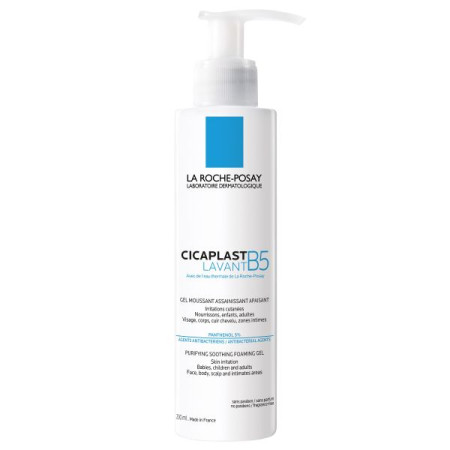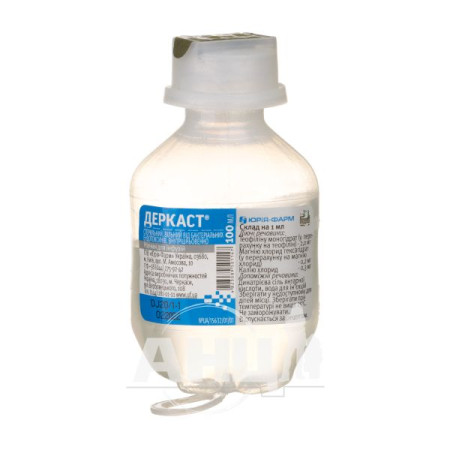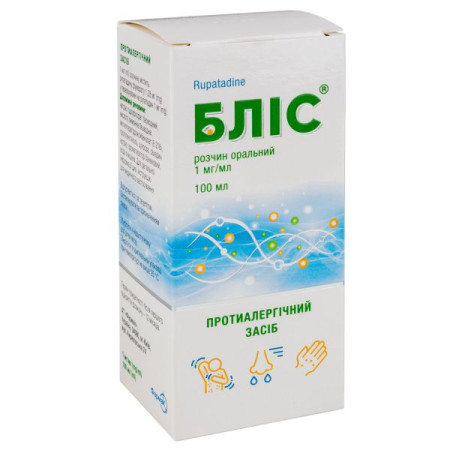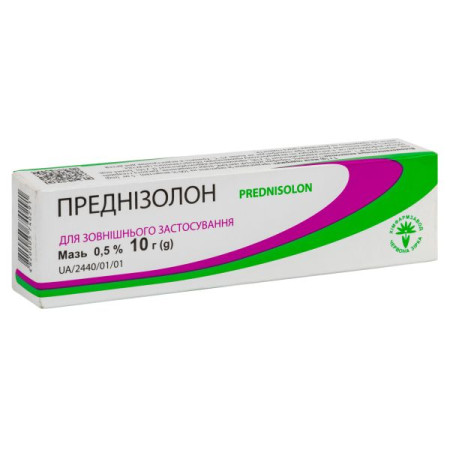Bilagis tablets 20 mg No. 30

Instructions for Bilagis tablets 20 mg No. 30
Composition
active ingredient: bilastine;
1 tablet contains bilastine 20 mg;
Excipients: microcrystalline cellulose, sodium starch glycolate (type A), colloidal anhydrous silicon dioxide, magnesium stearate.
Dosage form
Pills.
Main physicochemical properties: white or almost white, biconvex, oblong tablets, embossed with B20, with a score on one side.
Pharmacotherapeutic group
Antihistamines for systemic use. Other antihistamines for systemic use. Bilastine. ATX code R06A X29.
Pharmacological properties
Pharmacodynamics
Bilastine is a long-acting, non-sedating histamine antagonist, a highly selective blocker of peripheral H1 receptors that does not bind to muscarinic receptors.
After a single application, bilastine inhibits the development of histamine-induced skin reactions, manifested by blisters and redness, for 24 hours.
In clinical studies conducted in adults and adolescents with allergic rhinoconjunctivitis (seasonal and perennial), bilastine 20 mg once daily for 14-28 days was effective in relieving symptoms such as sneezing, nasal discharge, nasal itching, nasal congestion, itchy eyes, tearing and redness. Symptoms were effectively controlled by bilastine for 24 hours.
In two clinical studies in patients with chronic idiopathic urticaria, bilastine 20 mg once daily for 28 days was effective in reducing the intensity of itching and the number and size of wheals, as well as the discomfort caused by urticaria. Patients also experienced improvements in sleep and quality of life.
In clinical studies of bilastine, no clinically significant prolongation of the QTc interval or any other cardiovascular effects were observed, even when administered at a dose of 200 mg per day (10 times the clinical dose) for 7 days in 9 subjects or when co-administered with P-glycoprotein (P-gp) inhibitors such as ketoconazole (24 subjects) and erythromycin (24 subjects). In addition, a thorough QT study was conducted in 30 volunteers.
In controlled clinical trials, the central nervous system (CNS) safety profile of bilastine and placebo at the recommended dose of 20 mg once daily was similar, and the incidence of somnolence with bilastine was not statistically different from that with placebo. Bilastine at doses up to 40 mg per day did not affect psychomotor performance in clinical trials or the ability to drive in a standard driving test.
In elderly patients (≥ 65 years) who participated in phase II and III studies, the efficacy and safety of the drug did not differ from those in younger patients.
In a post-marketing study conducted in 146 elderly patients, no differences in the safety profile were found compared to other adult participants.
Children: Adolescents (aged 12–17 years) were enrolled in the clinical development program. Of these, 128 subjects received bilastine in clinical trials (81 in double-blind studies of allergic rhinoconjunctivitis), and the remaining 116 subjects were randomized to receive active comparator or placebo. No differences in efficacy or safety were observed between adults and adolescents.
Pharmacokinetics
Absorption: After oral administration, bilastine is rapidly absorbed, with peak plasma concentrations occurring approximately 1.3 hours after administration. No accumulation was observed. The mean oral bioavailability of bilastine is 61%.
Distribution: In vitro and in vivo studies have shown that bilastine is a substrate of Pgp (see Interactions with ketoconazole, erythromycin and diltiazem) and OATP (see Interactions with grapefruit juice). Bilastine does not appear to be a substrate of the BCRP transporter or the renal transporters OST2, OAT1 and OAT3. In vitro data do not suggest that bilastine inhibits the activity of transport proteins such as P-gp, MRP2, BCRP, BSEP, OATP1B1, OATP1B3, OATP2B1, OAT1, OAT3, OCT1, OCT2 and NTCP in the systemic circulation, as its ability to inhibit P-gp, OATP2B1 and OCT1 is insignificant and is characterized by an IC50 ≥ 300 μM, which significantly exceeds the estimated maximum plasma concentration (Cmax) in the case of clinical use of bilastine. Therefore, such interactions will not be of clinical significance. However, the results of similar studies indicate that inhibition by bilastine of transport proteins located in the intestinal mucosa (e.g. P-gp) cannot be excluded. When used in therapeutic doses, 84-90% of bilastine binds to plasma proteins.
Elimination: In a mass balance study conducted in healthy volunteers, after a single dose of 20 mg 14C-bilastine, almost 95% of the administered dose was recovered in urine (28.3%) and feces (66.5%) as unchanged bilastine, suggesting that bilastine is only slightly metabolized in humans. The mean elimination half-life of bilastine in healthy volunteers is 14.5 hours.
Linearity: In the dose range studied (5 to 220 mg), bilastine exhibits linear pharmacokinetics with low intersubject variability.
Kidney dysfunction. A study in patients with different renal function status showed that in case of normal renal function (glomerular filtration rate (GFR) > 80 mL/min/1.73 m2) the mean AUC0–¥ (± standard deviation) is 737.4 (± 260.8) ng×h/ml, in case of mild renal impairment (GFR = 50–80 mL/min/1.73 m2) this figure is 967.4 (± 140.2) ng×h/ml, in case of moderate impairment (GFR = 30–<50 mL/min/1.73 m2) — 1384.2 (± 263.23) ng×h/ml, and in case of severe impairment (GFR < 30 mL/min/1.73 m2) — 1708.5 (± 699.0) ng×h/ml.
In patients with normal renal function, the mean (± s.d.) half-life of bilastine was 9.3 (± 2.8) hours, in patients with mild renal impairment it was 15.1 (± 7.7) hours, in patients with moderate renal impairment it was 10.5 (± 2.3) hours, and in patients with severe renal impairment it was 18.4 (± 11.4) hours. In almost all patients, bilastine was not detected in the urine 48–72 hours after administration. Such changes in pharmacokinetics should not have clinical significance and should not affect the safety of bilastine, since its plasma concentrations in patients with renal impairment remain within safe limits.
Hepatic impairment. Pharmacokinetic data in patients with hepatic impairment are not available. Bilastine is not metabolised in humans. The results of a study in patients with renal impairment showed that bilastine is mainly excreted by the kidneys and is likely to be excreted only to a minor extent in the bile. Changes in hepatic function have no clinically significant effect on the pharmacokinetics of bilastine.
Elderly patients. Data on the pharmacokinetics of the drug in patients over 65 years of age are limited. The pharmacokinetic parameters of bilastine in patients over 65 years of age and in patients 18–35 years of age are not statistically significantly different.
Children: Pharmacokinetic data in adolescents (12-17 years) are not available, as extrapolation of data from adults is considered appropriate for this medicinal product.
Indication
For the symptomatic treatment of allergic rhinoconjunctivitis (seasonal and perennial) and urticaria.
Contraindication
Hypersensitivity to the active substance or to any of the excipients.
Interaction with other medicinal products and other types of interactions
Interaction with food. Food reduces the bioavailability of orally administered bilastine by 30%.
Interaction with grapefruit juice. When bilastine 20 mg was co-administered with grapefruit juice, the bioavailability of bilastine was reduced by 30%. A similar effect may also be observed with other fruit juices. The extent of the reduction in bioavailability may vary depending on the manufacturer of the juice and the fruit. The mechanism of this interaction is inhibition of the transporter protein OATP1A2, for which bilastine is a substrate (see section 5.2). Medicinal products that are substrates or inhibitors of OATP1A2, such as ritonavir or rifampicin, may also reduce the plasma concentration of bilastine.
Interaction with ketoconazole or erythromycin. When bilastine was co-administered with ketoconazole or erythromycin, the AUC of bilastine was doubled and the Cmax was increased 2-3-fold. Such changes can be explained by interactions at the level of transport proteins responsible for drug efflux from intestinal cells, since bilastine is a substrate for P-glycoprotein and is not metabolized (see section 5.2). The safety profile of bilastine on the one hand and ketoconazole or erythromycin on the other hand is unlikely to be affected by these changes. Other drugs that are substrates or inhibitors of P-gp, such as cyclosporine, may also increase the plasma concentration of bilastine.
Interaction with diltiazem. When 20 mg of bilastine and 60 mg of diltiazem were co-administered, the Cmax of bilastine increased by 50%. This effect can be explained by an interaction at the level of transport proteins (see section "Pharmacokinetics") responsible for the excretion of drugs from intestinal cells; this effect is unlikely to affect the safety profile of bilastine.
Interaction with ethyl alcohol. After simultaneous use of alcohol and bilastine at a dose of 20 mg, psychomotor functions were at the same level as after simultaneous use of alcohol and placebo.
Interaction with lorazepam. When bilastine 20 mg was administered simultaneously with lorazepam 3 mg for 8 days, no increase in the CNS depressant effect of lorazepam was observed.
Children: Drug interaction studies have only been conducted in adults. The extent of drug interactions and other forms of interactions are expected to be similar in children aged 12 to 17 years.
Application features
In patients with moderate or severe renal impairment, concomitant use of bilastine with P-glycoprotein inhibitors (ketoconazole, erythromycin, cyclosporine, ritonavir, diltiazem, etc.) may lead to increased plasma levels of bilastine, increasing the risk of its adverse reactions. Therefore, concomitant use of bilastine and P-glycoprotein inhibitors should be avoided in patients with moderate or severe renal impairment.
Use during pregnancy or breastfeeding
Pregnancy: There are no or limited amount of data from the use of bilastine in pregnant women.
Animal studies do not indicate direct or indirect harmful effects with respect to reproductive function, parturition or postnatal development. For safety reasons, it is preferable to avoid taking Bilagis during pregnancy.
Breastfeeding. Studies on the excretion of bilastine in human milk have not been conducted. Available pharmacokinetic data have shown that bilastine is excreted in human milk in animals. A decision on whether to continue/discontinue breast-feeding or to discontinue/abstain from Bilagis therapy should be made taking into account the benefit of breast-feeding for the child and the benefit of bilastine therapy for the mother.
Fertility: Limited or no clinical data are available. A study in rats did not reveal any adverse effects on fertility.
Ability to influence reaction speed when driving vehicles or other mechanisms
A study of the effect of bilastine on the ability to drive showed that in adults, treatment with bilastine at a dose of 20 mg did not affect the ability to drive. However, patients should be informed that in isolated cases the drug may cause drowsiness and thus affect the ability to drive or operate machinery.
Method of administration and doses
Dosage.
Adults and children (12 years of age and older): 20 mg bilastine (1 tablet) once daily for the relief of symptoms of allergic rhinoconjunctivitis (seasonal and perennial) and urticaria.
The tablet should be taken 1 hour before or 2 hours after food or fruit juice (see section “Interaction with other medicinal products and other types of interactions”).
Special patient groups.
Elderly patients: No dose adjustment is required for elderly patients (see sections 5.2 and 5.2).
Renal impairment: No dose adjustment is required for patients with renal impairment (see section 5.2).
In case of impaired liver function. There is no clinical experience with the drug in patients with impaired liver function. Since bilastine is not metabolized and is excreted mainly by the kidneys, impaired liver function should not lead to an increase in its systemic action to a dangerous level. Therefore, no dose adjustment is required in patients with impaired liver function (see section "Pharmacokinetics").
Children. Bilastine is not recommended for the treatment of allergic rhinoconjunctivitis and urticaria in children aged 0 to 2 years. The safety and efficacy of bilastine in children under 12 years of age have not yet been established.
Duration of treatment. In patients with allergic rhinitis, the drug should be used only during the period of contact with allergens. In patients with seasonal allergic rhinitis, treatment can be stopped after symptoms subside and resumed after their return. In patients with perennial allergic rhinitis, the drug can be used continuously during the period of contact with allergens. In patients with urticaria, the duration of treatment depends on the nature and duration of symptoms, as well as their dynamics.
Method of application.
For oral use.
The tablets should be taken with water. The daily dose is recommended to be taken in one go.
Children
The safety and effectiveness of bilastine in children under 12 years of age have not been confirmed.
Overdose
Information on acute overdose with bilastine has been obtained from clinical trials conducted during development and post-marketing surveillance. In clinical trials, after administration of bilastine to healthy adult volunteers at doses exceeding the therapeutic dose by 10-11 times (220 mg as a single dose or 200 mg daily for 7 days), the incidence of adverse reactions was twice as high as with placebo. The most commonly reported adverse reactions were dizziness, headache and nausea. There were no reports of serious adverse reactions and no significant prolongation of the QTc interval. The information collected during post-marketing surveillance is consistent with the data obtained during clinical trials.
In a thorough crossover study of QT/QTc intervals in 30 healthy adult volunteers, a critical assessment of the effects of multiple doses of bilastine (100 mg × 4 days) on ventricular repolarization revealed no significant prolongation of the QTc interval.
In case of overdose, symptomatic and supportive treatment is recommended.
The specific antidote to bilastine is unknown.
Side effects
In clinical trials in patients with allergic rhinoconjunctivitis or chronic idiopathic urticaria, adverse reactions with bilastine 20 mg occurred at approximately the same frequency as with placebo (12.7% and 2.8%). Phase II and III clinical trials conducted during clinical development included 2525 patients treated with various doses of bilastine, of whom 1697 received bilastine 20 mg. In these trials, 1362 patients received placebo. The most frequently reported adverse reactions in patients treated with bilastine 20 mg for the indication allergic rhinoconjunctivitis or chronic idiopathic urticaria were headache, somnolence, dizziness and fatigue. These adverse reactions occurred at a frequency comparable to the incidence of adverse reactions in patients receiving placebo.
The table below lists adverse reactions that were possibly related to bilastine and occurred in more than 0.1% of patients treated with bilastine 20 mg during clinical development (N = 1697).
The frequency of adverse reactions is defined as follows: very common (≥ 1/10); common (≥ 1/100 - < 1/10); uncommon (≥ 1/1000 - < 1/100); rare (≥ 1/10000 - < 1/1000); very rare (< 1/10000); unknown (cannot be estimated from the available data).
Reactions that occur rarely and very rarely, as well as those whose frequency is unknown, have not been included in the table.
| Organs and organ systems | Bilastine, 20 mg N = 1697 | All doses of bilastine N = 2525 | |
| Frequency | Adverse reaction | ||
| Infections and parasitic diseases | |||
| Infrequently | Oral herpes | 2 (0.12%) | 2 (0.08%) |
| Metabolic and nutritional disorders | |||
| Infrequently | Increased appetite | 10 (0.59%) | 11 (0.44%) |
| Mental disorders | |||
| Infrequently | Anxiety | 6 (0.35%) | 8 (0.32%) |
| Insomnia | 2 (0.12%) | 4 (0.16%) | |
| Nervous system disorders | |||
| Often | Drowsiness | 52 (3.06%) | 82 (3.25%) |
| Headache | 68 (4.01%) | 90 (3.56%) | |
| Infrequently | Dizziness | 14 (0.83%) | 23 (0.91%) |
| Hearing and labyrinth disorders | |||
| Infrequently | Tinnitus | 2 (0.12%) | 2 (0.08%) |
| Vertigo | 3 (0.18%) | 3 (0.12%) | |
| Heart disorders | |||
| Infrequently | Right bundle branch block | 4 (0.24%) | 5 (0.20%) |
| Sinus arrhythmia | 5 (0.30%) | 5 (0.20%) | |
| QT prolongation on electrocardiogram | 9 (0.53%) | 10 (0.40%) | |
| Other deviations of ECG indicators from normal levels | 7 (0.41%) | 11 (0.44%) | |
| Respiratory, thoracic and mediastinal disorders | |||
| Infrequently | Dyspnea | 2 (0.12%) | 2 (0.08%) |
| Unpleasant sensations in the nose | 2 (0.12%) | 2 (0.08%) | |
| Dry nose | 3 (0.18%) | 6 (0.24%) | |
| Gastrointestinal disorders | |||
| Infrequently | Upper abdominal pain | 11 (0.65%) | 14 (0.55%) |
| Abdominal pain | 5 (0.30 %) | 5 (0.20%) | |
| Nausea | 7 (0.41%) | 10 (0.40%) | |
| Abdominal discomfort | 3 (0.18%) | 4 (0.16%) | |
| Diarrhea | 4 (0.24%) | 6 (0.24%) | |
| Dry mouth | 2 (0.12%) | 6 (0.24%) | |
| Dyspepsia | 2 (0.12%) | 4 (0.16%) | |
| Gastritis | 4 (0.24%) | 4 (0.16%) | |
| Skin and subcutaneous tissue disorders | |||
| Infrequently | Itch | 2 (0.12%) | 4 (0.16%) |
| General disorders and administration site conditions | |||
| Infrequently | Fatigue | 14 (0.83%) | 19 (0.75%) |
| Thirst | 3 (0.18%) | 4 (0.16%) | |
| Exacerbation of pre-existing diseases | 2 (0.12%) | 2 (0.08%) | |
| Fever | 2 (0.12%) | 3 (0.12%) | |
| Asthenia | 3 (0.18%) | 4 (0.16%) | |
| Additional research methods | |||
| Infrequently | Increased gamma-glutamyltransferase levels | 7 (0.41%) | 8 (0.32%) |
| Increased alanine aminotransferase levels | 5 (0.30%) | 5 (0.20%) | |
| Increased aspartate aminotransferase levels | 3 (0.18%) | 3 (0.12%) | |
| Increased blood creatinine levels | 2 (0.12%) | 2 (0.08%) | |
| Increased blood triglyceride levels | 2 (0.12%) | 2 (0.08%) | |
| Weight gain | 8 (0.47%) | 12 (0.48%) | |
Frequency not known (cannot be estimated from the available data): palpitations, tachycardia, hypersensitivity reactions (such as anaphylaxis, angioedema, dyspnoea, rash, localised/localised oedema, erythema) and vomiting have been reported in the post-marketing period.
Almost all adverse reactions described above were observed with the same frequency in patients taking bilastine at a dose of 20 mg and in patients receiving placebo.
Information collected during post-marketing surveillance confirmed the safety profile observed during clinical development.
Children: During clinical development, the frequency, type and severity of adverse reactions in adolescents (12-17 years) were the same as in adults. Information collected in this group (adolescents) during post-marketing surveillance was confirmed by the results of clinical trials.
Reporting of suspected adverse reactions. Reporting of suspected adverse reactions after the registration of a medicinal product plays an important role. This allows for continued monitoring of the benefit-risk balance of the medicinal product. Healthcare professionals should report any suspected adverse reactions.
Expiration date
3 years from the date of manufacture in bulk.
Do not use the drug after the expiration date indicated on the package.
Storage conditions
Store in original packaging. No special storage conditions required. Keep out of reach of children.
Packaging
10 tablets in a blister. 1 or 3 blisters in a pack.
Vacation category
According to the recipe.
Producer
JSC "Farmak", Ukraine
(manufactured from bulk products of the manufacturer Laboratorios Norman, S.A., Spain).
Address
Ukraine, 04080, Kyiv, Kyrylivska St., 74.
There are no reviews for this product.
There are no reviews for this product, be the first to leave your review.
No questions about this product, be the first and ask your question.


















